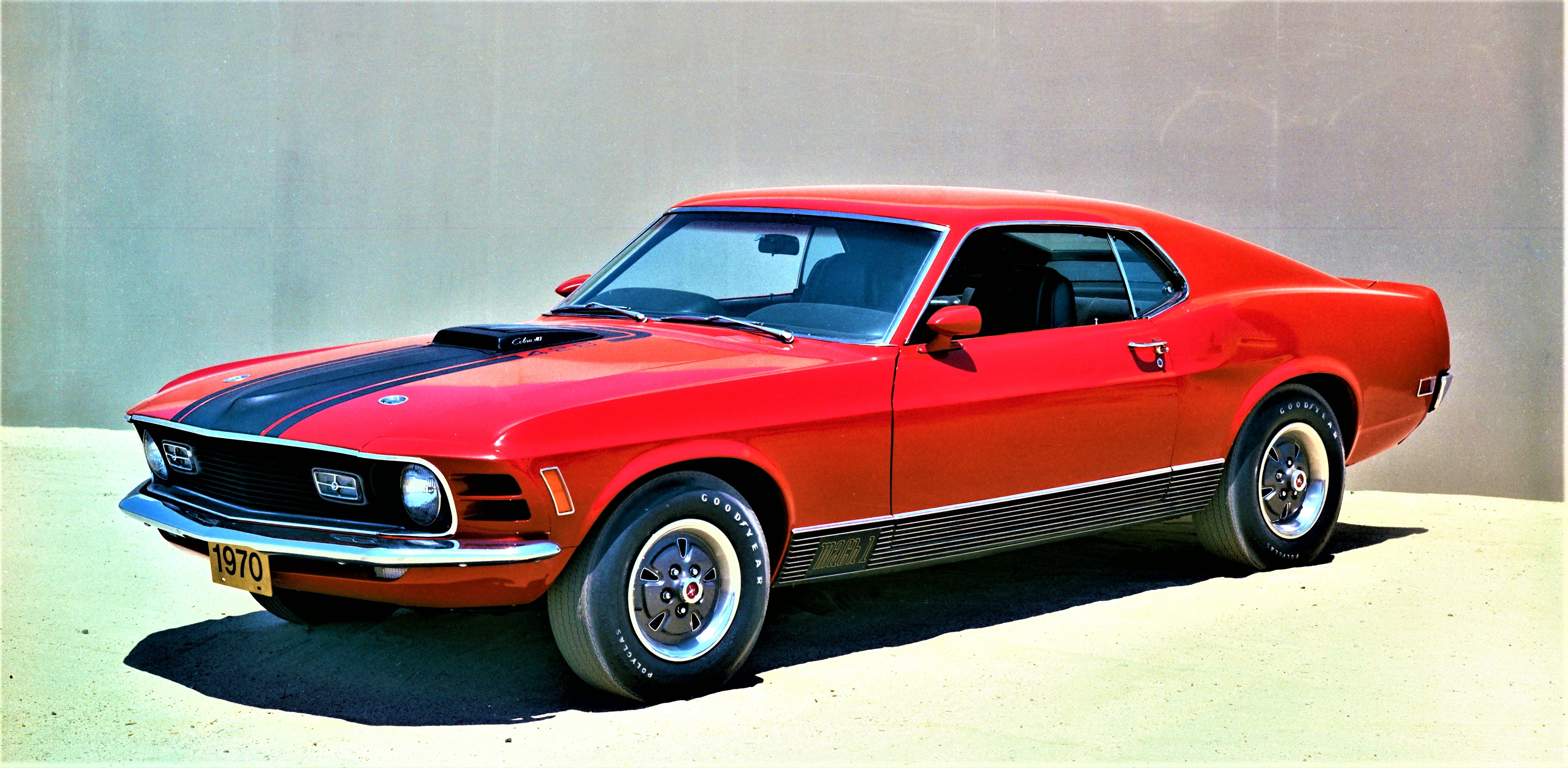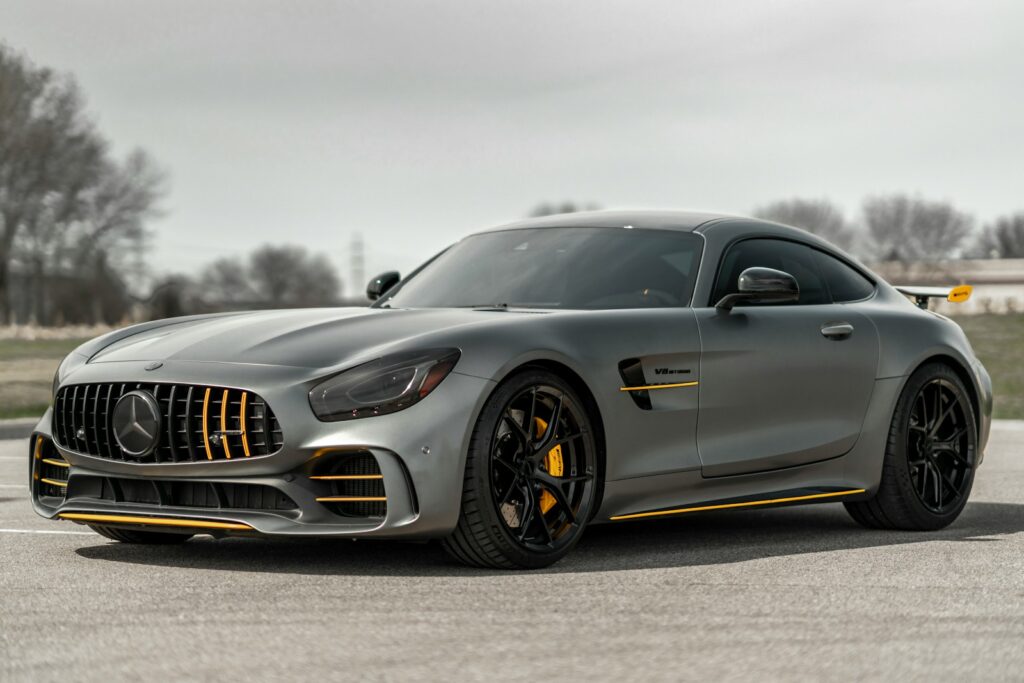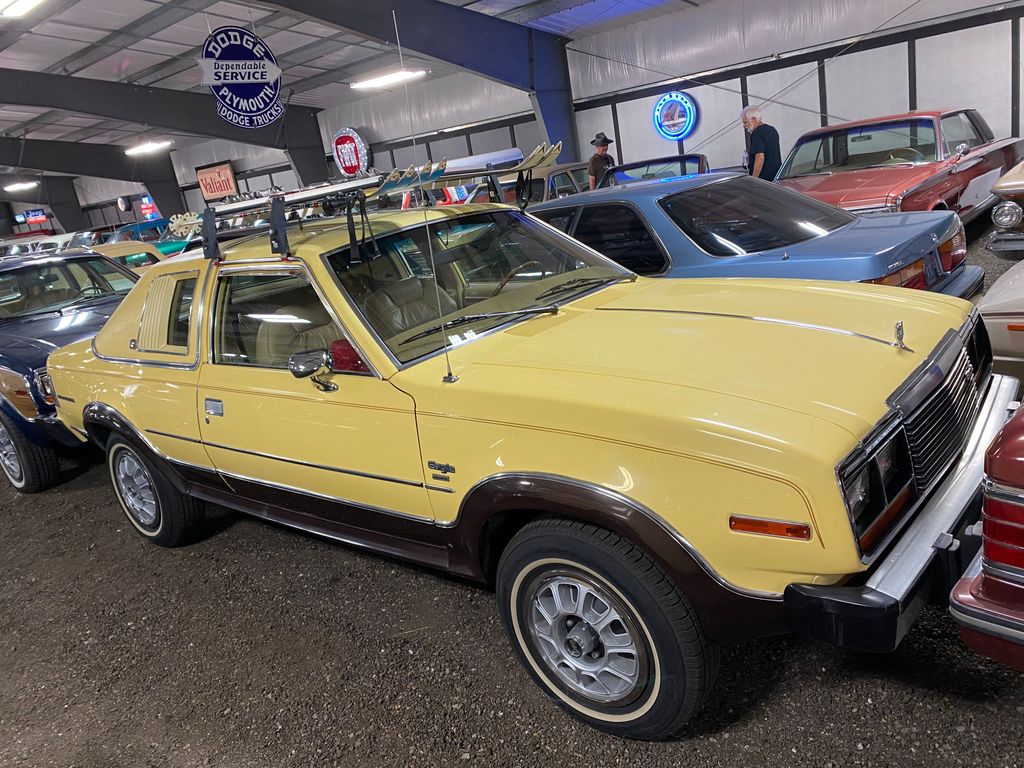
For the longest time, American cars from the 1980s were the undisputed underdogs of the collector world. They were often dismissed as quirky, boxy, and, let’s be honest, sometimes a bit plasticky. Many enthusiasts recalled an era of emissions and fuel economy pressures, when horsepower battles supposedly gave way to practicality and compliance, leading to cars that were perhaps best left in old photo albums, tucked away in an attic.
Yet, below the surface, engineers kept the flame alive. The post-emissions era vehicles of this decade offered glimpses of a new American performance revival, leveraging electronic fuel injection, turbocharging resurgence, and even leftover muscle traditions to produce surprising and collectible ’80s classics. Just like acid-wash jeans and synth-pop, these machines are back, gaining serious street cred and climbing in value. Suddenly, that boxy sedan your uncle drove to work is now undeniably cool, especially for a generation that grew up with them.
Indeed, for Generation X, who came of age with Sony Walkmans, video arcades, and MTV, these cars imprint differently. While Baby Boomers might have their first-wave muscle car legends, Gen-Xers formed their automotive passions during the mid-1980s performance rebirth. This isn’t just about horsepower; it’s about the undeniable power of nostalgia. We’ve meticulously surveyed the landscape of second-wave muscle cars and identified twelve standouts that offer an exceptional combination of relative performance and undeniable collector interest, bridging the gap between original muscle and the modern era of unprecedented automotive prowess.
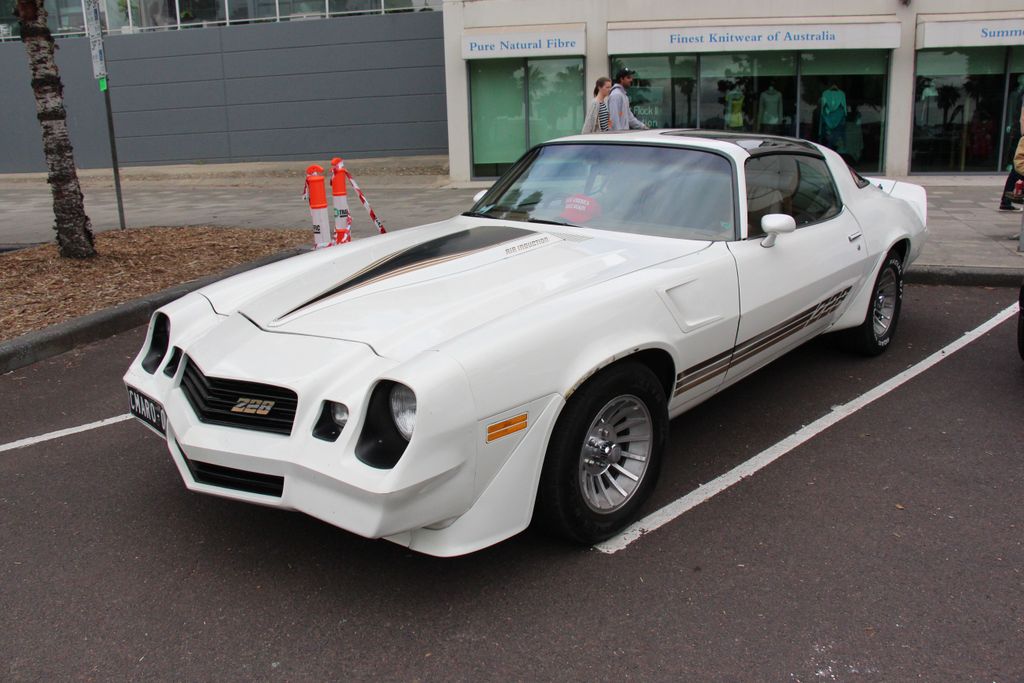
1. **1978-1981 Chevrolet Camaro Z28**Ironically, the Chevrolet Camaro’s great sales success came during a period when its performance ratings had seemingly bottomed out. After a brief two-year hiatus, the Z28 model was triumphantly reintroduced in 1977, marking a pivotal shift in focus towards refined handling. This strategic move paid off handsomely, aligning with evolving consumer preferences for a more balanced driving experience.
The 1978 styling update across the entire Camaro line proved to be a significant catalyst for its burgeoning success. This refresh contributed to overall Camaro sales peaking in 1979, reaching an impressive 282,571 units, a figure that included nearly 85,000 Z28s. In fact, over 228,000 Z28 models were sold in the final four years of the second generation, solidifying its status as a highly sought-after performance coupe.
Given the sheer volume of Z28s produced during this era, these cars are still relatively easy to find on the market today. However, the real challenge for collectors lies in unearthing an example that remains largely unmodified or, crucially, one that hasn’t been terminally afflicted with sheetmetal cancer. Finding an unmolested specimen truly enhances its collectibility and value in a scene increasingly appreciating originality.
Car Model Information: 2018 Chevrolet Camaro 1LS
Name: Chevrolet Camaro
Manufacturer: Chevrolet
Production: 1966–2002,2009–2023
ModelYears: 1967–2002,2010–2024
Class: Pony car
BodyStyle: coupe,convertible
Platform: GM F platform,GM Zeta platform,GM Alpha platform
Layout: Front-engine, rear-wheel-drive layout
Categories: 1970s cars, 1980s cars, 1990s cars, 2+2 coupés, 2000s cars
Summary: The Chevrolet Camaro is a mid-size American automobile manufactured by Chevrolet, classified as a pony car. It first went on sale on September 29, 1966, for the 1967 model year and was designed to compete with the Ford Mustang. The Camaro shared its platform and major components with the Firebird, produced by General Motors’ Pontiac division that was also introduced for the 1967 model year.
Four distinct generations of the Camaro were developed before production ended in 2002. The nameplate was revived on a concept car that evolved into the fifth-generation Camaro; production started on March 16, 2009.
Production of the sixth generation of the Camaro ended in December 2023, for the 2024 model year.
Get more information about: Chevrolet Camaro
Buying a high-performing used car >>>
Brand: Chevrolet Model: Camaro
Price: $19,125 Mileage: 69,196 mi.
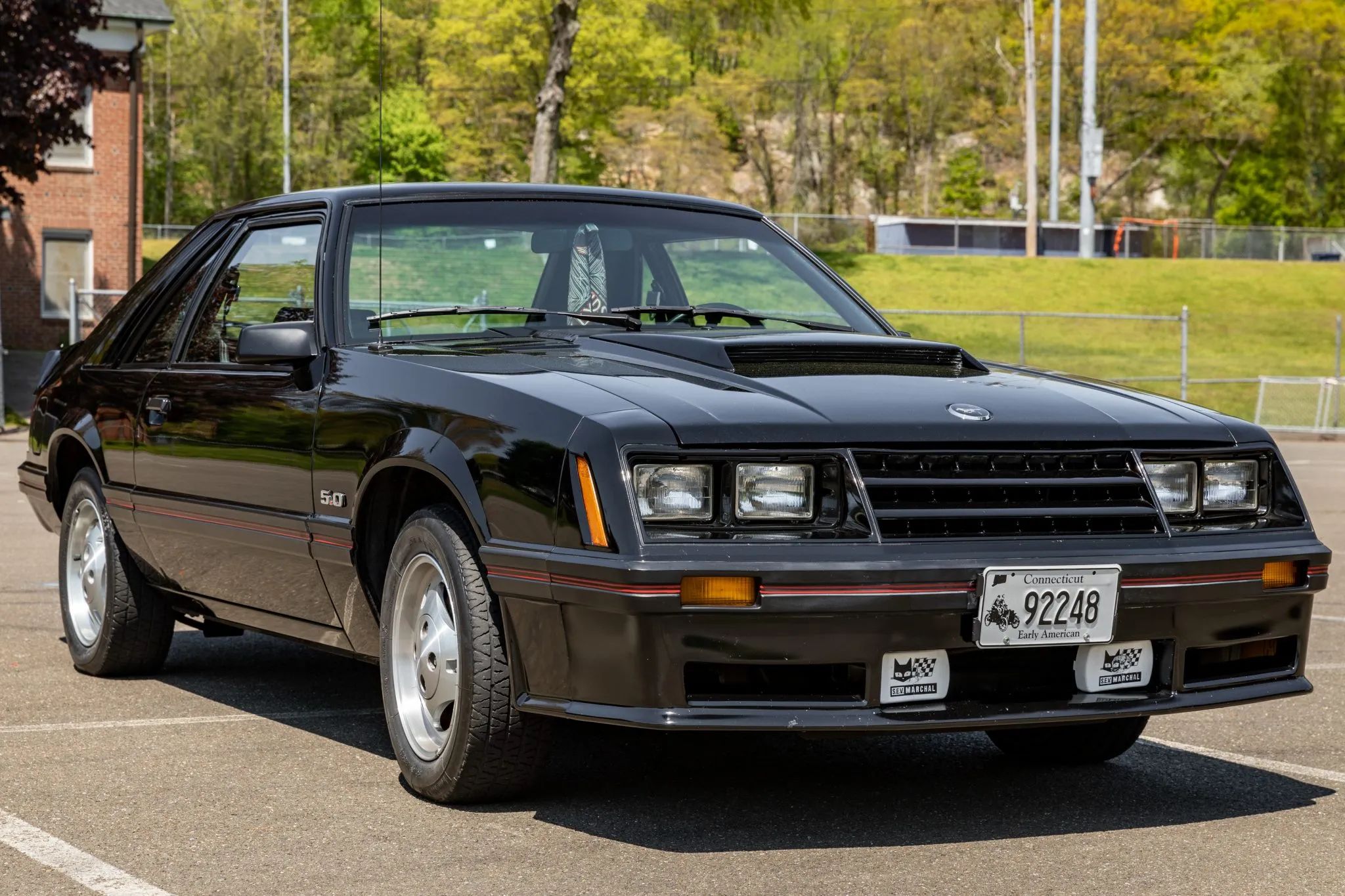
2. **1982-1986 Ford Mustang GT**Ford emphatically proclaimed “The Boss is Back” with the highly anticipated introduction of the 1982 Mustang GT, signaling a renewed commitment to performance after a challenging decade. While the tagline was bold, a detailed rundown of the specifications reveals just how much performance had eroded in the preceding years, setting a baseline for the decade’s resurgence. This initial iteration, equipped with a two-barrel-fed 302 engine, produced a modest 157 horsepower, which allowed for 0-60 mph times of around 8 seconds and quarter-miles in the low 16s.
However, in its contemporary context, this level of performance was considered “blistering” and grabbed significant headlines, especially when compared to the even slower third-generation Camaro Z28. The very next year, Ford swiftly addressed the performance appetite of enthusiasts by adding a four-barrel carburetor and implementing additional performance upgrades throughout the remainder of the “four-eye” years. These continuous improvements were instrumental in progressively dropping the elapsed times and, critically, ushering in the next epoch of Detroit performance.
The Mustang GT’s trajectory from its 1982 reintroduction to its subsequent enhancements laid the groundwork for a new era of factory horsepower wars. It demonstrated Ford’s dedication to reclaiming its performance heritage, providing a solid foundation upon which future muscle car development would build. For collectors, these early Fox-body GTs represent the crucial beginning of a highly influential chapter in American automotive history, marking a turning point for accessible street performance.
Car Model Information: 2024 Genesis GV70 2.5T AWD
Name: Ford Mustang
Caption: 2018 Ford Mustang GT 5.0
Aka: Ford T5 (Germany)
Manufacturer: Ford Motor Company
Production: March 1964 – present
ModelYears: 1965–present
Class: Unbulleted list
BodyStyle: Unbulleted list
Layout: Front-engine, rear-wheel-drive layout
Categories: 1970s cars, 1980s cars, 1990s cars, 2+2 coupés, 2000s cars
Summary: The Ford Mustang is a series of American automobiles manufactured by Ford. In continuous production since 1964, the Mustang is currently the longest-produced Ford car nameplate. Currently in its seventh generation, it is the fifth-best selling Ford car nameplate. The namesake of the “pony car” automobile segment, the Mustang was developed as a highly styled line of sporty coupes and convertibles derived from existing model lines, initially distinguished by “long hood, short deck” proportions.
Originally predicted to sell 100,000 vehicles yearly, the 1965 Mustang became the most successful vehicle launch since the 1927 Model A. Introduced on April 17, 1964 (16 days after the Plymouth Barracuda), over 400,000 units were sold in its first year; the one-millionth Mustang was sold within two years of its launch. In August 2018, Ford produced the 10-millionth Mustang; matching the first 1965 Mustang, the vehicle was a 2019 Wimbledon White convertible with a V8 engine.
The success of the Mustang launch led to multiple competitors from other American manufacturers, including the Chevrolet Camaro and Pontiac Firebird (1967), AMC Javelin (1968), and Dodge Challenger (1970). It also competed with the Plymouth Barracuda, which was launched around the same time. The Mustang also had an effect on designs of coupes worldwide, leading to the marketing of the Toyota Celica and Ford Capri in the United States (the latter, by Lincoln-Mercury). The Mercury Cougar was launched in 1967 as a unique-bodied higher-trim alternative to the Mustang; during the 1970s, it included more features and was marketed as a personal luxury car.
From 1965 until 2004, the Mustang shared chassis commonality with other Ford model lines, staying rear-wheel-drive throughout its production. From 1965 to 1973, the Mustang was derived from the 1960 Ford Falcon compact. From 1974 until 1978, the Mustang (denoted Mustang II) was a longer-wheelbase version of the Ford Pinto. From 1979 until 2004, the Mustang shared its Fox platform chassis with 14 other Ford vehicles (becoming the final one to use the Fox architecture). Since 2005, Ford has produced two generations of the Mustang, each using a distinct platform unique to the model line.
Through its production, multiple nameplates have been associated with the Ford Mustang series, including GT, Mach 1, Boss 302/429, Cobra (separate from Shelby Cobra), and Bullitt, along with “5.0” fender badging (denoting 4.9 L OHV or 5.0 L DOHC V8 engines).
Get more information about: Ford Mustang
Buying a high-performing used car >>>
Brand: Ford Model: Mustang GT
Price: $39,995 Mileage: 20,074 mi.
Read more about: The Cars That Became Stars: 12 Iconic Vehicles from 70s & 80s TV & Film
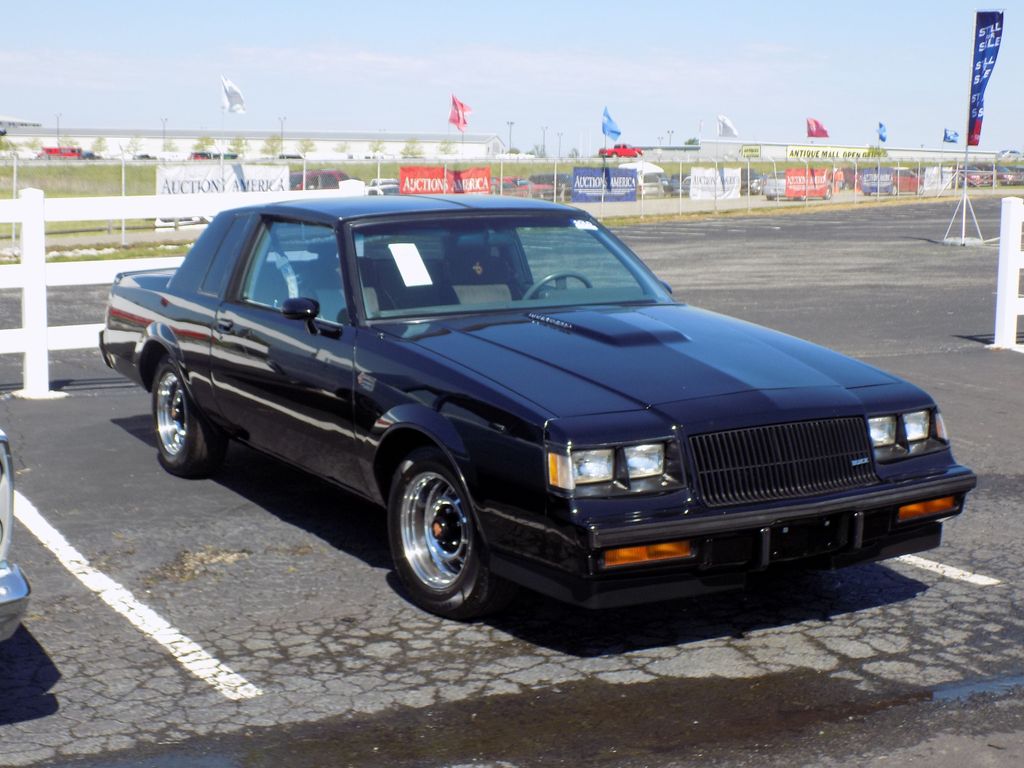
3. **1986-1987 Buick Grand National**It is simply impossible to compile a comprehensive list of iconic 1980s American cars without giving the Buick Grand National its rightful place. This vehicle transcended mere automotive status to become an instant performance legend and a cultural icon, recognized and admired by a broad spectrum of enthusiasts and even those outside the typical car community, from “your girlfriend’s girlfriends” to Baby Boomers who finally found a worthy successor to their cherished original muscle cars.
Buick’s journey with turbocharged V-6 engines began much earlier, in the mid-1970s, notably when it pressurized the powerplant in the 1976 Regal used as the Indy 500 pace car. Production turbo engines arrived a couple of years later, but it was the intercooled Grand National that truly crystallized the brand’s performance potential. The integration of an advanced intercooling system, alongside other critical upgrades, significantly boosted output to an impressive 245 horsepower—a substantial 22 percent jump over the previous “hot air” versions.
The Grand National’s collectibility is already firmly established, with values consistently rising and showing no signs of becoming more affordable. For aspiring owners, the primary challenge, much like with other highly sought-after cars of this era, is locating an example that has not been subjected to extensive modifications. An original, unmolested 1986-1987 Buick Grand National stands as a testament to American engineering ingenuity and remains a premier trophy for any serious collector.
Car Model Information: 2024 Genesis GV70 2.5T AWD
Name: Buick Regal
Caption: 2020 Regal Sportback
Manufacturer: Buick
ModelYears: Unbulleted list
Sp: us
Predecessor: Buick Skylark#Second generation (1968–1972),Buick Century
Successor: Buick LaCrosse
Categories: 1980s cars, 1990s cars, 2000s cars, 2010s cars, 2020s cars
Summary: The Buick Regal is a line of mid-size cars marketed by Buick since 1973. Serving as the premium mid-size/intermediate car of the Buick product range for nearly its entire production, the Regal initially served as the divisional counterpart of the Pontiac Grand Prix and Oldsmobile Cutlass Supreme; since the late 2000s, the model line has been derived from the Opel Insignia. The Regal also serves as the basis of the high-performance Grand National, Gran Sport (GS), and Buick GNX coupes.
Through its production, the Regal has been marketed under a wide variety of body styles, including two-door coupes and four-door sedans (currently in production), along with a 5-door liftback sedan and a 5-door station wagon; the latter (the 2018-2020 Regal TourX) was the first Buick station wagon marketed since the retirement of both the Century and Roadmaster Estates after 1996. The turbocharged LD5 3.8L V6 used in the second generation was used to showcase the motorsports presence of the brand; though offered with other vehicles (including Chevrolets and Pontiacs), the turbocharged engine is most commonly associated with the Regal. During the 1990s, the V6 regained forced induction, with a supercharger replacing the turbocharger.
In 1999, General Motors commenced sales of its vehicles in China, with the Buick Regal serving as its introductory model of the joint venture SAIC-GM. After 2004, Buick retired the model line in North America, as it replaced both the Regal and the Century with the Buick LaCrosse. Following the introduction of the second-generation Regal for China for 2008, the model line returned to North America for the 2011 model year, slotted slightly below the LaCrosse. Following the introduction of the sixth-generation Regal (sourced entirely from Opel) for 2018, GM sold Opel to PSA (now Stellantis), ending sales in North America after the 2020 model year. Currently, the Insignia B-derived Regal remains in production by SAIC-GM.
Get more information about: Buick Regal
Buying a high-performing used car >>>
Brand: Buick Model: Grand National
Price: $39,995 Mileage: 20,074 mi.
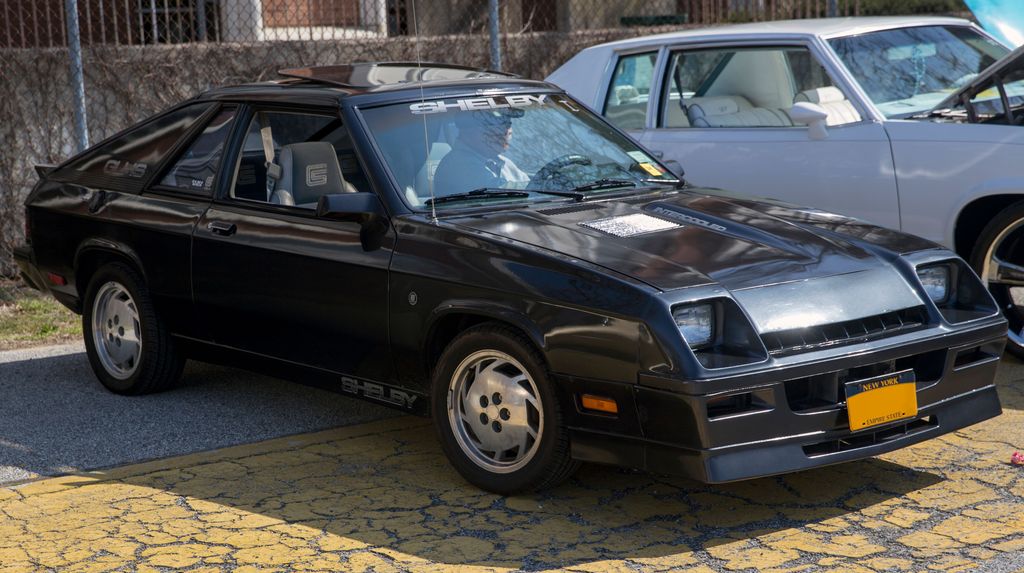
4. **1987 Dodge Charger Shelby GLHS**The 1987 Dodge Charger Shelby GLHS holds a unique position on our list, notably being the sole Mopar entry and the only front-wheel-drive vehicle among these celebrated collectible cars. This distinction speaks volumes about the significant transformations Chrysler underwent in the 1980s and underscores the sheer significance of this particular model. Legendary tuner Carroll Shelby had already imbued humble vehicles like the Omni with considerable street credibility through the “Goes Like Hell” (GLH) model and the even more potent 1986 GLHS (“Goes Like Hell S’more”).
For the 1987 iteration, Shelby turned his attention to the two-door Charger, infusing it with a formidable 175-horsepower turbocharged 2.2L four-cylinder engine. While this power output might seem modest by today’s standards, its true impact was amplified by the car’s remarkably low curb weight of only about 2,600 pounds. This power-to-weight ratio enabled the GLHS to scorch from 0-60 mph in less than 7 seconds and cover the quarter-mile in the mid-14s—performance figures that remain genuinely quick even in the current automotive landscape.
With only 1,000 units ever built, the 1987 Dodge Charger Shelby GLHS is undeniably rare, making it one of the more ephemeral and highly coveted Shelby projects. Its limited production, combined with its surprising performance capabilities, ensures that its collectibility star continues to be firmly on the rise. It stands as compelling proof that substantial muscle and excitement could indeed come in smaller, front-wheel-drive packages, especially when touched by Shelby’s engineering magic and signature swagger.
Car Model Information: 2022 Dodge Charger SRT Hellcat Widebody
Name: Dodge Charger
Caption: 1969 Dodge Charger
Manufacturer: Dodge
Production: 1966–1978,1981–1987,2005–present
ModelYears: 1966–1978,1982–1987,2006–present
Categories: 1960s cars, 1970s cars, 1980s cars, 2000s cars, 2010s cars
Summary: The Dodge Charger is a model of automobile marketed by Dodge in various forms over eight generations since 1966.
The first Charger was a show car in 1964. A 1965 Charger II concept car resembled the 1966 production version.
In the United States, the Charger nameplate has been used on mid-size cars, personal luxury coupes, subcompact hatchbacks, and full-size sedans.
Get more information about: Dodge Charger
Buying a high-performing used car >>>
Brand: Dodge Model: Charger
Price: $82,991 Mileage: 1,802 mi.
Read more about: Beyond the Icon: Unearthing 12 Rare American Automotive Gems from the 1980s

5. **1983-1988 Monte Carlo SS**The 1983-1988 Monte Carlo SS is unquestionably one of the best-looking sport coupes that emerged from its era, boasting a design that captivated enthusiasts and casual observers alike. It represented Chevrolet’s aerodynamic response to the sleek, bullet-shaped Ford Thunderbird, particularly as both vied for supremacy on NASCAR ovals. The Monte SS certainly possessed the visual appeal and aggressive stance, embodying a classic American performance aesthetic.
However, while its looks were undoubtedly on point, the Monte Carlo SS regrettably lacked the sheer brawn to fully back up its muscular appearance. It was offered exclusively with a 180-horsepower 305 cubic-inch engine, which produced 175 horsepower in its 1983 iteration. The saving grace for its everyday drivability was the small-block’s inherent low-end grunt, which made the Monte SS feel responsive and engaging between stoplights, providing a satisfying, albeit not blistering, acceleration experience.
Despite its somewhat lackluster quarter-mile performance, typically taking around 16 seconds to trip the timing lights, the Monte Carlo SS’s undeniable aesthetic appeal was often more than enough to win over fans. With more than 180,000 units built during its six-year production run, including over 6,000 Aerocoupe models featuring a unique sloped rear window for NASCAR homologation, the supply of these vehicles remains strong. For collectors, its striking looks and connection to racing history make it a highly desirable piece, proving that visual charisma can sometimes outweigh raw power in the realm of collectibility.
Car Model Information: 2024 Genesis GV70 2.5T AWD
Name: Chevrolet Monte Carlo
Manufacturer: Chevrolet
Production: 1969–1987,1994–2007
ModelYears: 1970–1988,1995–2007
Class: Personal luxury car
BodyStyle: coupé
Layout: FR layout
Caption: 2006 Chevrolet Monte Carlo LS
Categories: 1980s cars, 1990s cars, 2000s cars, All Wikipedia articles written in American English, All articles needing additional references
Summary: The Chevrolet Monte Carlo is a two-door coupe that was manufactured and marketed by the Chevrolet division of General Motors. Deriving its name from the city in Monaco, the Monte Carlo was marketed as the first personal luxury car of the Chevrolet brand. Introduced for the 1970 model year, the model line was produced across six generations through the 2007 model year, with a hiatus from 1989 until 1994. The Monte Carlo was a variant of the Pontiac Grand Prix throughout its production.
From 1970 until 1972, the Monte Carlo rode on the unique “A-Special” platform with the Grand Prix, shifting to the standard A-body intermediate chassis from the 1973 through 1977 model years. For 1978, the Monte Carlo line underwent downsizing, but was still considered a midsized coupe. The rear-wheel drive A-body platform of this generation of Monte Carlo was redesignated as the G-body when GM’s front-wheel drive A-body cars were introduced for the 1982 model year. After an abbreviated 1988 model year, the Monte Carlo was replaced by the two-door Chevrolet Lumina.
For the 1995 model year, the Monte Carlo was revived, replacing the two-door Lumina. It shared the front-wheel drive W-platform with the two-door Grand Prix, and was the largest coupe in the Chevrolet lineup. After the 2002 model year, the Grand Prix coupe was discontinued, the Monte Carlo became the largest two-door model produced by an American auto manufacturer.
In response to declining sales of the model line, Chevrolet discontinued the Monte Carlo after the 2007 model year. During much of its production, the Monte Carlo represented the Chevrolet brand in stock car racing. During the 1980s, the Monte Carlo SS was introduced, featuring aerodynamically enhanced styling; as part of its revival, the Monte Carlo again represented Chevrolet in stock car racing from 1995 through its discontinuation.
Get more information about: Chevrolet Monte Carlo
Buying a high-performing used car >>>
Brand: Chevrolet Model: Monte Carlo SS
Price: $39,995 Mileage: 20,074 mi.
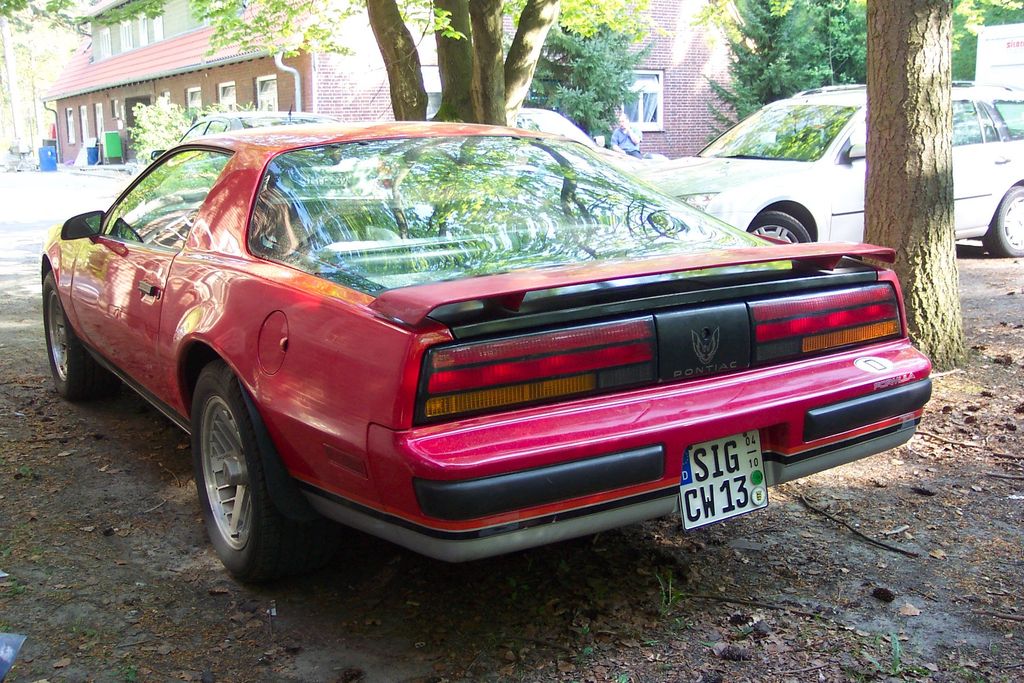
6. **1987-1992 Pontiac Firebird Formula**Just as the Ford Mustang LX 5.0 began to gain significant traction with savvy customers who recognized the compelling combination of performance and cost advantages offered by an elemental muscle car, Pontiac reintroduced the Firebird Formula model with a very similar intent. The core idea behind the Formula was to provide enthusiasts with access to virtually all the potent performance hardware typically found in the higher-tier Trans Am, but in a lighter, less expensive, and more understated package, appealing to those who prioritized substance over flamboyant styling.
Engine options for the Firebird Formula included both 305 and 350 Tuned Port Injection (TPI) versions of the versatile “corporate” small-block engine. Additionally, a carbureted 305 was offered in 1987 for those seeking a more traditional setup. The 350 TPI engine was undoubtedly the powerhouse of the lineup, delivering robust performance, though it was notably available only with an automatic transmission. In contrast, the 305 TPI could be paired with a manual transmission, offering a more engaging driving experience for purists.
While automatic 305 cars represent the most common configuration, collectors and enthusiasts today are often advised to hold out for a manual model or, even better, a 350 car for the ultimate combination of power and driving engagement. The Firebird Formula stands as a testament to Pontiac’s commitment to delivering accessible performance in the late 1980s and early 1990s, offering a compelling blend of affordability, capability, and timeless muscle car appeal that continues to make it a sought-after collectible in the modern market.
Car Model Information: 2024 Genesis GV70 2.5T AWD
Name: Pontiac Firebird
Caption: The second, third, and fourth generations of,the Pontiac Firebird Trans Am
Manufacturer: Pontiac (automobile)
Production: February 23, 1967 – August 30, 2002
ModelYears: 1967 – 2002
Class: Pony car,Muscle car
Platform: GM F platform
Related: Chevrolet Camaro
Layout: Front engine, rear-wheel-drive layout
Categories: 1970s cars, 1980s cars, 1990s cars, 2000s cars, All articles with dead external links
Summary: The Pontiac Firebird is an American automobile built and produced by Pontiac from the 1967 to 2002 model years. Designed as a pony car to compete with the Ford Mustang, it was introduced on February 23, 1967, five months after GM’s Chevrolet division’s platform-sharing Camaro. This also coincided with the release of the 1967 Mercury Cougar, Ford’s upscale, platform-sharing version of the Mustang.
The name “Firebird” was also previously used by GM for the General Motors Firebird series of concept cars in the 1950s.
Get more information about: Pontiac Firebird
Buying a high-performing used car >>>
Brand: Pontiac Model: Firebird Formula
Price: $39,995 Mileage: 20,074 mi.

7. **1983-1984 Hurst/Olds**The 1983-1984 Hurst/Olds represents a fascinating bridge between the raw power of the classic muscle car era and the emerging technologies of the 1980s. Oldsmobile ingeniously rekindled the legendary 442/Hurst brand synergy, building these cars on the G-body platform, a versatile chassis shared by other General Motors favorites like the Cutlass Supreme and Buick Regal. These vehicles weren’t just cars; they were modern interpretations of a celebrated heritage, designed to evoke a sense of automotive nostalgia while pushing forward with new ideas.
Under the hood, the Hurst/Olds featured a 5.0L V8 engine, delivering a respectable 180 horsepower. While this figure might seem modest by today’s standards or compared to the roaring big-blocks of prior decades, it was certainly enough to command attention in an era characterized by lower compression ratios. What truly set these machines apart, however, was the iconic Hurst Lightning Rod Shifter. This innovative feature provided a manual-like gear selection experience for the automatic transmission, adding a layer of driver engagement that was unique and highly sought after by enthusiasts.
With a limited production run of approximately 3,001 units in 1983 and 3,500 in 1984, the Hurst/Olds models are relatively scarce today, especially those preserving their distinctive black-over-silver or reverse paint schemes. This short-lived revival effectively captured the essence of Oldsmobile performance and significantly fueled the “pre-internet tuner culture” of the time. Owners and enthusiasts eagerly tweaked the 5.0L V8, constantly seeking to unlock extra power and performance, cementing its place as a cherished collectible among those who appreciate the era’s blend of style and burgeoning performance.
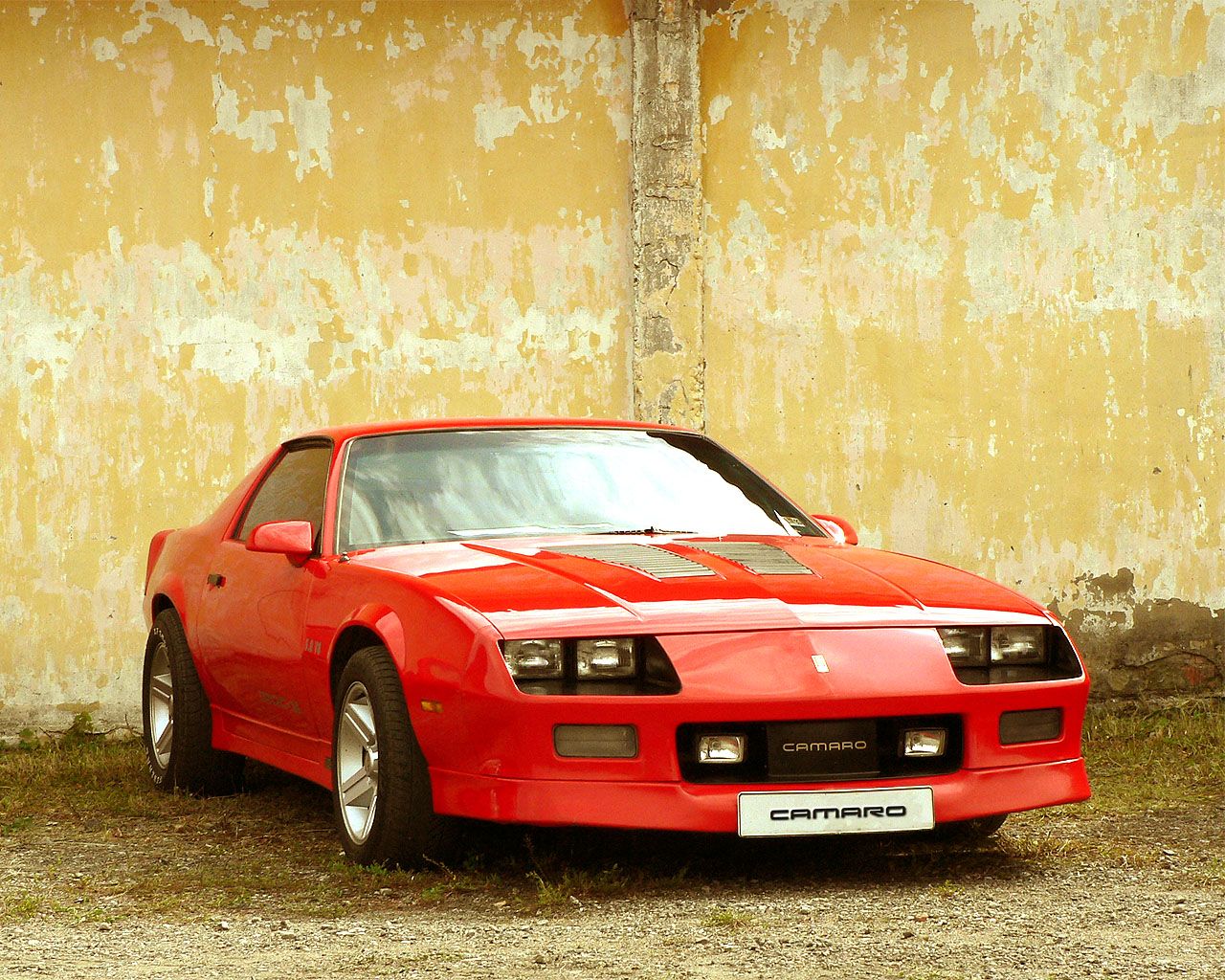
8. **1985-1990 Chevy Camaro IROC-Z**The Chevrolet Camaro IROC-Z wasn’t just a car; it was a bona fide cultural phenomenon of the 1980s, intrinsically linked to the fashion, music, and entertainment of the decade. Born from a collaboration between Chevrolet and the International Race of Champions (IROC) series, this high-performance variant of the Camaro was meticulously designed with an uncompromising focus on speed and agility. Its bold and aggressive styling, inspired directly by the IROC racing series, featured a distinctive front grille and a look that instantly communicated its sporting intentions.
Beyond its undeniable aesthetic appeal, the IROC-Z was a dynamically strong car, praised for its perfect proportions and exceptional handling. It cornered with a prowess that few other cars of its time could match, making it a favorite among those who prioritized driving dynamics. Powering this icon was a 7-liter V8 engine, generating a formidable 205 horsepower and 320 lb-ft of torque. This robust engine, combined with a 4-speed manual transmission featuring a precise Hurst shifter, allowed the IROC-Z to sprint from 0-60 mph in a blistering 5.5 seconds and reach a top speed of 130 mph, figures that were truly impressive for the era.
Despite some unfortunate pop-culture stereotypes it acquired, the IROC-Z’s time has undeniably come in the collector market. Its sport-tuned suspension, complete with front stabilizer and rear anti-roll bars, along with its 5-inch front and rear disc brakes, ensured a performance package that was both thrilling and capable. For collectors seeking the most desirable examples, the 305 five-speed manual models or any variant equipped with the potent 350 engine (though available only with an automatic) are particularly sought after, confirming the IROC-Z’s enduring status as a symbol of American muscle car culture.
Car Model Information: 2018 Chevrolet Camaro 1LS
Name: Chevrolet Camaro
Manufacturer: Chevrolet
Production: 1966–2002,2009–2023
ModelYears: 1967–2002,2010–2024
Class: Pony car
BodyStyle: coupe,convertible
Platform: GM F platform,GM Zeta platform,GM Alpha platform
Layout: Front-engine, rear-wheel-drive layout
Categories: 1970s cars, 1980s cars, 1990s cars, 2+2 coupés, 2000s cars
Summary: The Chevrolet Camaro is a mid-size American automobile manufactured by Chevrolet, classified as a pony car. It first went on sale on September 29, 1966, for the 1967 model year and was designed to compete with the Ford Mustang. The Camaro shared its platform and major components with the Firebird, produced by General Motors’ Pontiac division that was also introduced for the 1967 model year.
Four distinct generations of the Camaro were developed before production ended in 2002. The nameplate was revived on a concept car that evolved into the fifth-generation Camaro; production started on March 16, 2009.
Production of the sixth generation of the Camaro ended in December 2023, for the 2024 model year.
Get more information about: Chevrolet Camaro
Buying a high-performing used car >>>
Brand: Chevrolet Model: Camaro
Price: $19,125 Mileage: 69,196 mi.
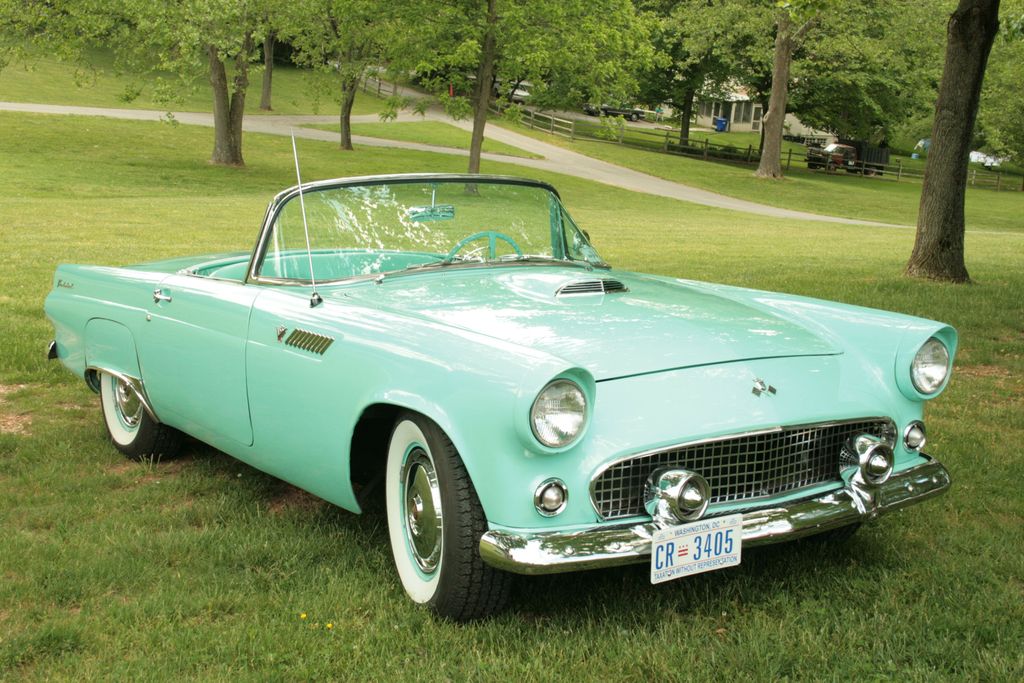
9. **1983-1988 Ford Thunderbird Turbo Coupe**The Ford Thunderbird Turbo Coupe was a truly forward-thinking machine, successfully bridging the distinct performance dynamics and aesthetics of American and European automotive design. More than just a stylish coupe, it stood as a technology leader for Ford, notably introducing electronically controlled port fuel injection and the automaker’s ubiquitous EEC-IV controller, setting a new standard for engine management in the brand’s lineup. This innovative spirit positioned it as a compelling alternative for drivers seeking something beyond traditional V8 muscle.
Initially, the turbocharged 2.3L engine in the Turbo Coupe delivered respectable performance, but a significant leap came with the 1987 styling update, which introduced an intercooled version of the engine. This crucial upgrade dramatically boosted power from 145 to a more exhilarating 190 horses, transforming the car’s responsiveness and overall driving experience. This improvement underscored Ford’s commitment to leveraging advanced forced induction technology to achieve impressive power outputs from smaller displacement engines, a trend that would define future performance vehicles.
While few of the non-intercooled early models remain, the 1987-1988 Turbo Coupes, with their enhanced performance, continue to be recognized for their distinctiveness and engaging driving fun. Although they may rank slightly lower on the collectibility scale compared to some raw muscle cars, their unique blend of American comfort and European-inspired turbo performance makes them an intriguing pick for enthusiasts. They represent a significant moment in Ford’s history, showcasing a willingness to experiment with diverse engineering approaches and cater to a wider spectrum of performance preferences.
Car Model Information: 2003 Ford Thunderbird
Name: Ford Thunderbird
Caption: 1957 Thunderbird
Manufacturer: Ford Motor Company
Production: unbulleted list
ModelYears: unbulleted list
Class: unbulleted list
Layout: Front-engine, rear-wheel drive layout
Categories: 1960s cars, 1970s cars, 1980s cars, 1990s cars, 2000s cars
Summary: The Ford Thunderbird is a personal luxury car manufactured and marketed by Ford Motor Company for model years 1955 to 2005, with a hiatus from 1998 to 2001.
Ultimately gaining a broadly used colloquial nickname, the T-Bird, the model was introduced as a two-seat convertible, subsequently offered variously in a host of body styles including as a four-seat hardtop coupe, four-seat convertible, five-seat convertible and hardtop, four-door pillared hardtop sedan, six-passenger hardtop coupe, and five-passenger pillared coupe, before returning in its final generation, again as a two-seat convertible.
At its inception, Ford targeted the two-seat Thunderbird as an upscale model. The 1958 model year design introduced a rear seat and arguably marked the expansion of a market segment that came to be known as personal luxury cars, positioned to emphasize comfort and convenience over handling and high-speed performance.
Get more information about: Ford Thunderbird
Buying a high-performing used car >>>
Brand: Ford Model: Thunderbird
Price: $14,700 Mileage: 49,430 mi.
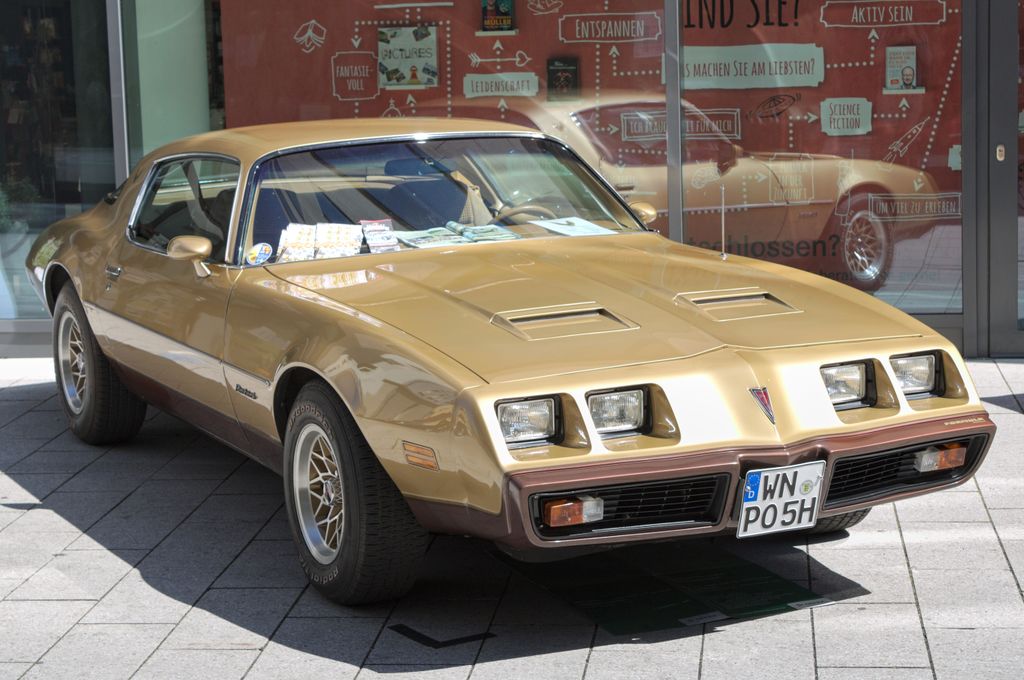
10. **1979-1981 Pontiac Trans Am**Even in its final years of the second generation, the Pontiac Trans Am remained an incredibly popular vehicle, despite offering only about half the horsepower of its predecessors from a decade earlier. What truly made these Trans Ams stand out was their exceptional handling prowess, a quality in which they notably outshone even their corporate cousin, the Chevrolet Camaro Z28. This focus on agility and road-holding capability made them an exhilarating drive, especially when equipped with their iconic T-top panels removed for an open-air experience.
For collectors, the 1979 model year with the Pontiac 400/four-speed combination remains the coveted “hot ticket,” representing the pinnacle of raw, engaging performance for this generation. An Olds 403 engine was also available in 1979, identifiable externally by “6.6 LITRE” on the shaker scoop, differentiating it from the “T/A 6.6” found on the Pontiac 400-equipped cars. These distinctive visual cues added to the car’s bold, angular styling and prominent hood scoop, features heavily influenced by the Pontiac Firebird design, embodying the spirit of the 1980s.
While the 1980-1981 models introduced a turbocharged 301 V-8, which was not considered one of Pontiac’s more successful engineering endeavors, the overall appeal of the Trans Am endured due to its dynamic capabilities and sheer visual charisma. The combination of a powerful stance, impressive handling, and the undeniable cool factor of the T-tops ensured a blast to drive. Even with modest engine output compared to earlier iterations, the 1979-1981 Trans Am remains a sought-after piece of American automotive history for its style and agility.
Car Model Information: 2017 Jeep Grand Cherokee Overland
Name: Pontiac Firebird
Caption: The second, third, and fourth generations of,the Pontiac Firebird Trans Am
Manufacturer: Pontiac (automobile)
Production: February 23, 1967 – August 30, 2002
ModelYears: 1967 – 2002
Class: Pony car,Muscle car
Platform: GM F platform
Related: Chevrolet Camaro
Layout: Front engine, rear-wheel-drive layout
Categories: 1970s cars, 1980s cars, 1990s cars, 2000s cars, All articles with dead external links
Summary: The Pontiac Firebird is an American automobile built and produced by Pontiac from the 1967 to 2002 model years. Designed as a pony car to compete with the Ford Mustang, it was introduced on February 23, 1967, five months after GM’s Chevrolet division’s platform-sharing Camaro. This also coincided with the release of the 1967 Mercury Cougar, Ford’s upscale, platform-sharing version of the Mustang.
The name “Firebird” was also previously used by GM for the General Motors Firebird series of concept cars in the 1950s.
Get more information about: Pontiac Firebird
Buying a high-performing used car >>>
Brand: Pontiac Model: Trans Am
Price: $18,995 Mileage: 79,490 mi.
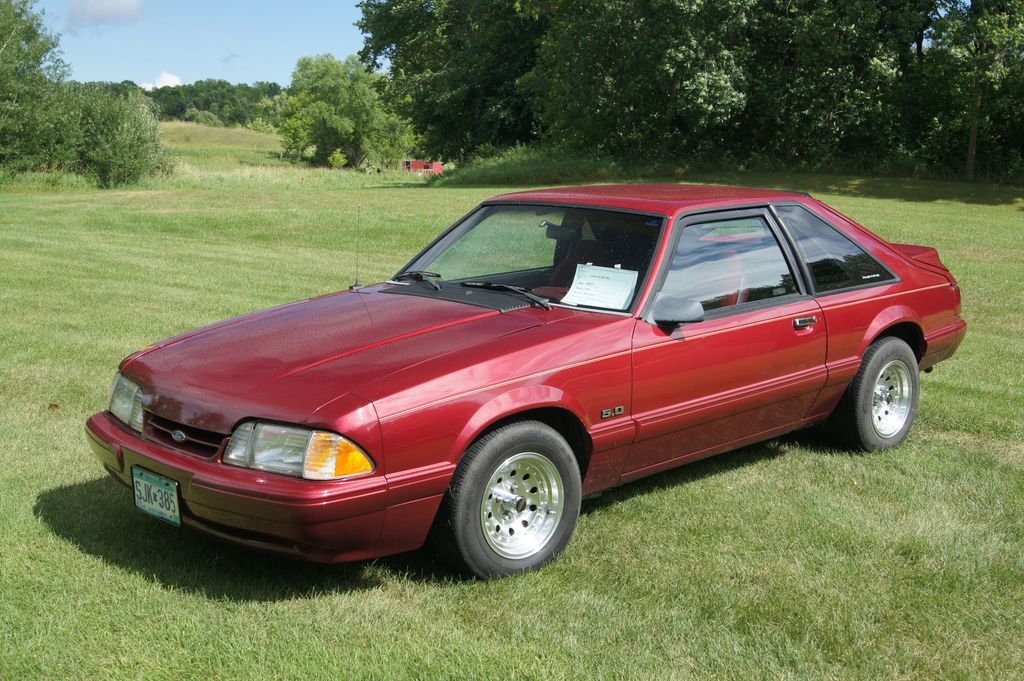
11. **1987-1993 Ford Mustang LX 5.0**If the 1982 Mustang GT effectively reignited the factory horsepower wars in America, then the “aero-nose” Mustang LX 5.0 truly carpet-bombed the competition, establishing a new benchmark for accessible performance. This iteration of the Mustang combined a lightweight chassis with an incredibly affordable price point, creating a compelling package that schooled a new generation of enthusiasts in the finer points of drag-racing technique and overall street performance. It was a true people’s performance car, offering impressive capability without breaking the bank.
Under its unassuming exterior, the 1987 Ford Mustang LX 5.0 was a significant upgrade to the Mustang lineup, delivering a powerful and agile driving experience. It utilized the same potent 5.0-liter V8 engine found in the GT model, producing 210 horsepower and 260 pounds of torque—a robust output that ensured eager revving and impressive acceleration. Despite the comparable Camaro range offering more horsepower and features like four-wheel disc brakes, the Mustang LX distinguished itself with superior fleetness of foot, squirting off the line with remarkable alacrity and proving admirably robust in performance.
The LX model’s inherent advantage lay in its weight: it was approximately 200 pounds lighter than the comparable GT, a difference that translated directly into noticeable performance gains. Today, unmodified examples of the Mustang LX 5.0 are becoming increasingly rare and valuable, particularly the notchback models and those retaining their original five-speed transmissions. This model stands as a testament to how affordability and effective engineering could converge to create a performance powerhouse, cementing its status as a highly collectible and influential car of the 1980s.
Car Model Information: 2024 Ford Mustang Mach-E GT
Name: Ford Mustang
Caption: 2018 Ford Mustang GT 5.0
Aka: Ford T5 (Germany)
Manufacturer: Ford Motor Company
Production: March 1964 – present
ModelYears: 1965–present
Class: Unbulleted list
BodyStyle: Unbulleted list
Layout: Front-engine, rear-wheel-drive layout
Categories: 1970s cars, 1980s cars, 1990s cars, 2+2 coupés, 2000s cars
Summary: The Ford Mustang is a series of American automobiles manufactured by Ford. In continuous production since 1964, the Mustang is currently the longest-produced Ford car nameplate. Currently in its seventh generation, it is the fifth-best selling Ford car nameplate. The namesake of the “pony car” automobile segment, the Mustang was developed as a highly styled line of sporty coupes and convertibles derived from existing model lines, initially distinguished by “long hood, short deck” proportions.
Originally predicted to sell 100,000 vehicles yearly, the 1965 Mustang became the most successful vehicle launch since the 1927 Model A. Introduced on April 17, 1964 (16 days after the Plymouth Barracuda), over 400,000 units were sold in its first year; the one-millionth Mustang was sold within two years of its launch. In August 2018, Ford produced the 10-millionth Mustang; matching the first 1965 Mustang, the vehicle was a 2019 Wimbledon White convertible with a V8 engine.
The success of the Mustang launch led to multiple competitors from other American manufacturers, including the Chevrolet Camaro and Pontiac Firebird (1967), AMC Javelin (1968), and Dodge Challenger (1970). It also competed with the Plymouth Barracuda, which was launched around the same time. The Mustang also had an effect on designs of coupes worldwide, leading to the marketing of the Toyota Celica and Ford Capri in the United States (the latter, by Lincoln-Mercury). The Mercury Cougar was launched in 1967 as a unique-bodied higher-trim alternative to the Mustang; during the 1970s, it included more features and was marketed as a personal luxury car.
From 1965 until 2004, the Mustang shared chassis commonality with other Ford model lines, staying rear-wheel-drive throughout its production. From 1965 to 1973, the Mustang was derived from the 1960 Ford Falcon compact. From 1974 until 1978, the Mustang (denoted Mustang II) was a longer-wheelbase version of the Ford Pinto. From 1979 until 2004, the Mustang shared its Fox platform chassis with 14 other Ford vehicles (becoming the final one to use the Fox architecture). Since 2005, Ford has produced two generations of the Mustang, each using a distinct platform unique to the model line.
Through its production, multiple nameplates have been associated with the Ford Mustang series, including GT, Mach 1, Boss 302/429, Cobra (separate from Shelby Cobra), and Bullitt, along with “5.0” fender badging (denoting 4.9 L OHV or 5.0 L DOHC V8 engines).
Get more information about: Ford Mustang
Buying a high-performing used car >>>
Brand: Ford Model: Mustang
Price: $41,628 Mileage: 3,879 mi.
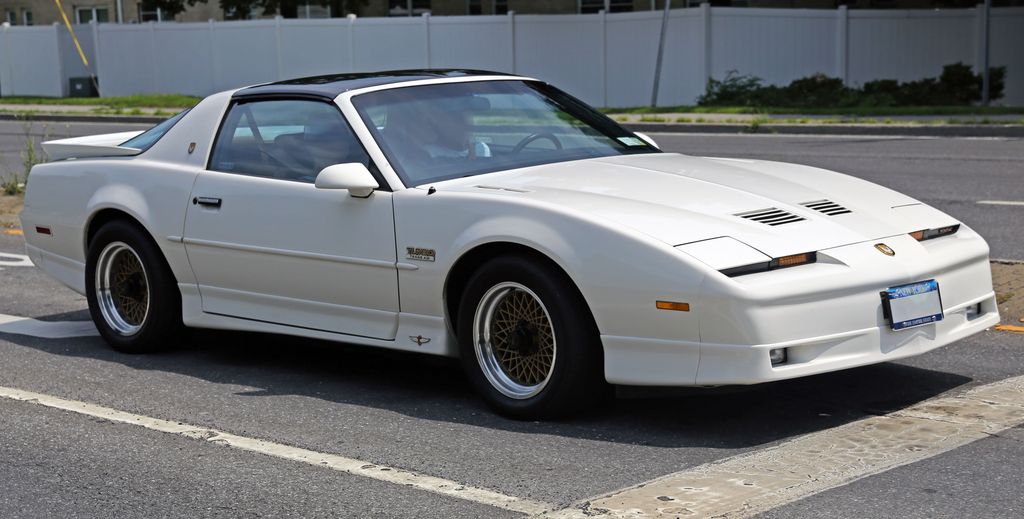
12. **1989 Pontiac Turbo Trans Am 20th Anniversary**The 1989 Pontiac Turbo Trans Am, affectionately known as the “TTA,” immediately earned collector favor and for very good reason: it was flat-out the quickest American car of its day. This limited-run 20th Anniversary Trans Am drew heavily from the proven success of Buick’s turbocharged V6 technology, effectively installing a powerplant nearly identical to the legendary GNX’s into Pontiac’s iconic F-body chassis. This blend of best-in-class turbo technology with Pontiac’s classic muscle identity created an unforgettable performance machine.
Under the hood, the TTA featured a 3.8L intercooled turbo V6 engine, officially rated at 250 horsepower to avoid upstaging the Corvette within GM’s performance hierarchy. However, its true output was widely known to be closer to an astounding 300 horsepower, enabling eye-watering performance figures. This enabled the TTA to achieve sub-14-second quarter-mile times and rocket from 0-60 mph in under 5 seconds, performance levels that rivaled some of the most exotic sports cars of its era. Even today, these figures remain genuinely quick, underscoring the TTA’s engineering prowess.
With only 1,555 units ever produced, each commemorating two decades of the Trans Am legacy, the 1989 Turbo Trans Am is exceptionally rare and highly desirable. Its status as an Indy Pace Car replica further amplifies its collectible appeal. The TTA stands as a groundbreaking vehicle, pushing the boundaries of performance and handling while showcasing GM’s remarkable engineering synergy in the late 1980s. Nothing else came close in 1989. It is truly a prized trophy for any serious collector looking to own a true performance legend from the decade.
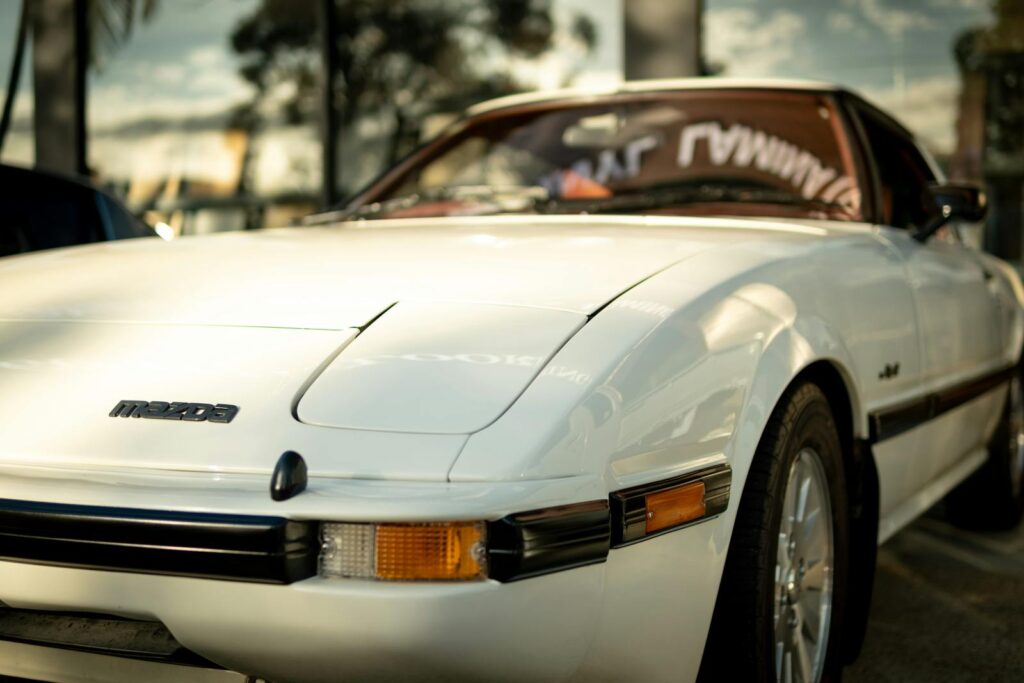
Rarity, Performance, and the Collector’s Gaze Today
These twelve remarkable American cars from the 1980s, often initially dismissed as products of a “malaise era,” have undeniably carved out their own revered niche in the pantheon of classic Detroit iron. What was once seen as a period defined by emissions regulations and fuel economy pressures quietly became a crucible for innovation, leading to a new wave of American performance. Engineers, far from giving up, leveraged advancements like electronic fuel injection, a resurgence in turbocharging, and a clever reinterpretation of traditional muscle car values to create surprising and increasingly collectible classics.
The rising auction values and fervent enthusiast communities surrounding these vehicles today are a powerful testament to their enduring appeal. They offer a unique blend of old-school mechanical charm infused with proto-modern technology, serving as a captivating link between the raw power of the 1960s and the sophisticated performance machines of the 1990s and beyond. Whether you’re a lifelong car enthusiast, a Generation X’er steeped in the nostalgia of Walkmans and video arcades, or a new collector seeking distinctive vehicles, these ’80s icons offer something truly special.
Car Model Information: 2017 Jeep Grand Cherokee Overland
Name: Pontiac Firebird
Caption: The second, third, and fourth generations of,the Pontiac Firebird Trans Am
Manufacturer: Pontiac (automobile)
Production: February 23, 1967 – August 30, 2002
ModelYears: 1967 – 2002
Class: Pony car,Muscle car
Platform: GM F platform
Related: Chevrolet Camaro
Layout: Front engine, rear-wheel-drive layout
Categories: 1970s cars, 1980s cars, 1990s cars, 2000s cars, All articles with dead external links
Summary: The Pontiac Firebird is an American automobile built and produced by Pontiac from the 1967 to 2002 model years. Designed as a pony car to compete with the Ford Mustang, it was introduced on February 23, 1967, five months after GM’s Chevrolet division’s platform-sharing Camaro. This also coincided with the release of the 1967 Mercury Cougar, Ford’s upscale, platform-sharing version of the Mustang.
The name “Firebird” was also previously used by GM for the General Motors Firebird series of concept cars in the 1950s.
Get more information about: Pontiac Firebird
Buying a high-performing used car >>>
Brand: Pontiac Model: Turbo Trans Am
Price: $18,995 Mileage: 79,490 mi.
From the stealthy turbo V6 of the Buick Grand National to the radical aerodynamic touches on the Monte Carlo SS Aerocoupe, and the bold mechanical experimentation seen in cars like the Shelby Charger GLHS or the mid-engine Fiero GT, each model stands as compelling proof that the best ideas often emerge when engineers bravely push boundaries in challenging times. These cars aren’t just investments; they are tangible pieces of automotive history, celebrating a decade where American ingenuity quietly yet powerfully rekindled the spirit of high performance, setting the stage for the era of unprecedented automotive prowess we enjoy today.


